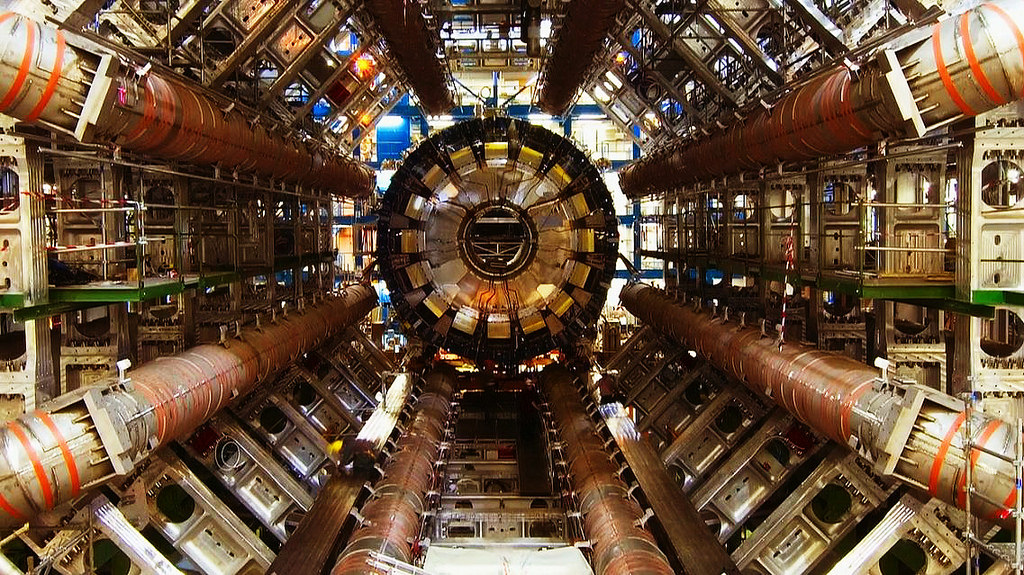At an atomic number of two, helium is known most commonly for floating party balloons and producing hilariously high pitched voices, but the noble gas is not often thought of as a non-renewable resource.

Party balloons are possibly the most well known use of helium. Credit to HilkeFromm (link)
Aside from parade balloons, helium gas is used in a variety of practical ways from weather balloons to leak detection. Being inert and non-toxic, helium is also used to pressurize scuba diving and rocket fuel tanks and has applications in welding.
However, the most significant property of helium is its cooling ability. With a boiling point of 4.2K, liquid helium is one of the coldest liquids known to science. Employing a pump, one can further cool liquid helium by reducing pressure and upon reaching 2.17 K, helium becomes a superfluid, allowing for very high thermal conductivity and zero viscosity.

This property makes helium essential in the creation of superconducting magnets, such as those found in CERN’s Large Hadron Collider, and the in magnetic resonance imaging (MRI) scanners.

CERN’s Large Hadron Collider. Credit to: Thomas Cizauskas, flickr, October 11, 2014 (link)
On Earth, helium is produced underground by the radioactive decay of heavy metals. This process is known as alpha decay and emits a helium nucleus (two neutrons and two protons), which gains two electrons and forms Helium-4. Next to hydrogen, helium is second most abundant element in the universe, but unfortunately it’s quite rare on Earth.

The Bohr model of a Helium Atom. Credit to: Wikimedia Commons, Nov. 3, 2005 (link)
This is because helium’s low mass allows it to escape Earth’s atmosphere and into outer space. Because of this, helium is only found trapped underground and is often mined together with deposits of natural gas. With no way of producing more, our access to the precious gas is finite and until recently scientists believed the world would run out with the next 25 to 30 years. The worlds largest supply of helium is in Amarillo, Texas with the Federal Helium Reserve which was stockpiling helium from 1925 until 1996 when the decision was made to sell it. While the scarcity of the gas has many worried, this flooding of the market resulted in helium’s rarity being poorly reflected in its price.
Fortunately, a new, massive deposit of helium was recently discovered in the Tanzanian East African Rift Valley. While this new reservoir brings relief to science and industry, it will only prolong the worlds helium shortage. Helium remains a limited resource, and should be conserved and recycled when possible, or we might find ourselves running out again.
– Kevin O’Connor (revised Oct. 13, 2016)
References:
What is the most abundant element? http://antoine.frostburg.edu/chem/senese/101/periodic/faq/what-element-is-most-abundant.shtml (accessed October 1, 2016)
Cryogenics: Low temperatures, high performance. CERN. https://home.cern/about/engineering/cryogenics-low-temperatures-high-performance (accessed October 1, 2016)
Helium. Royal Society of Chemistry. http://www.rsc.org/periodic-table/element/2/helium (accessed October 1, 2016)
Magill, B. As Shortage Worsens, We Visit the Federal Helium Reserve. http://www.popularmechanics.com/science/health/a8289/as-shortage-worsens-we-visit-the-federal-helium-reserve-14720528/ (accessed October 1, 2016)
Harvey, C. The world is running dangerously low on helium. This discovery reinflates our supply. https://www.washingtonpost.com/news/energy-environment/wp/2016/06/28/the-world-is-running-dangerously-low-on-helium-this-discovery-reinflates-our-supply/?utm_term=.62a6d2408852 (accessed October 1, 2016)
What Happens If We Run Out Of Helium? Dominguez, Trace. Dnews, YouTube.com. 19 July 2016. https://www.youtube.com/watch?v=eCorxPmmLa8 (accessed October 1, 2016)
